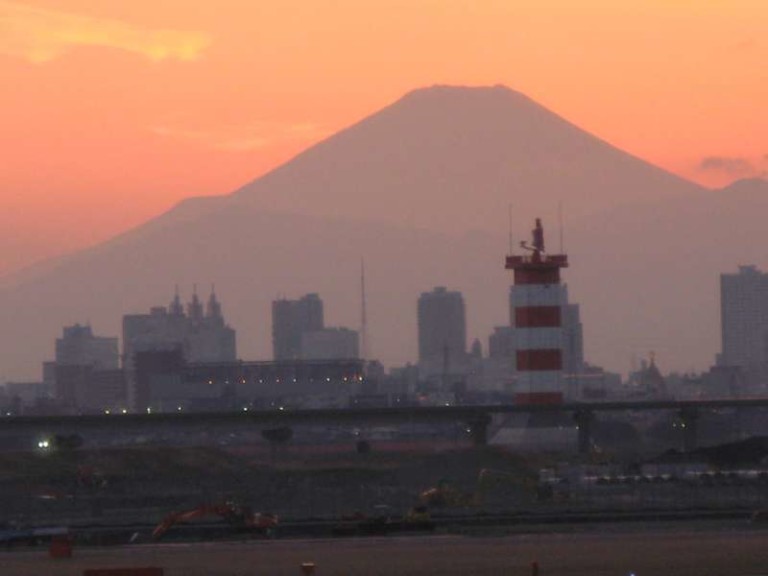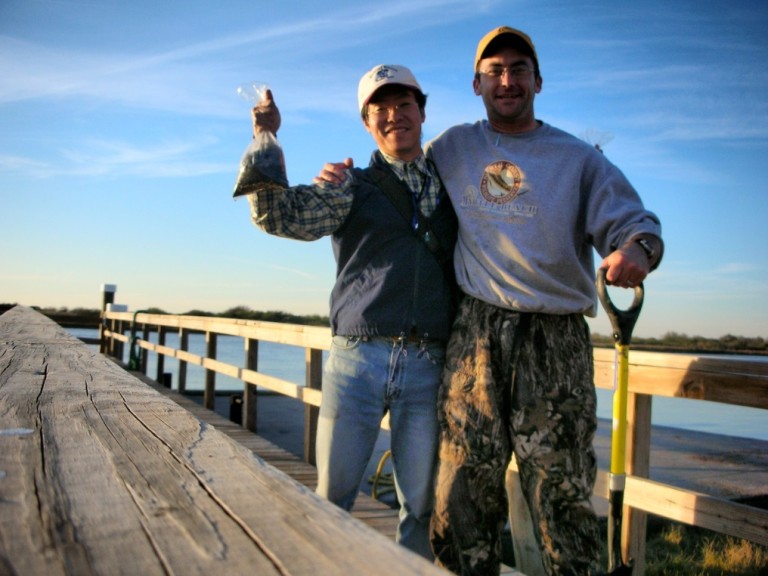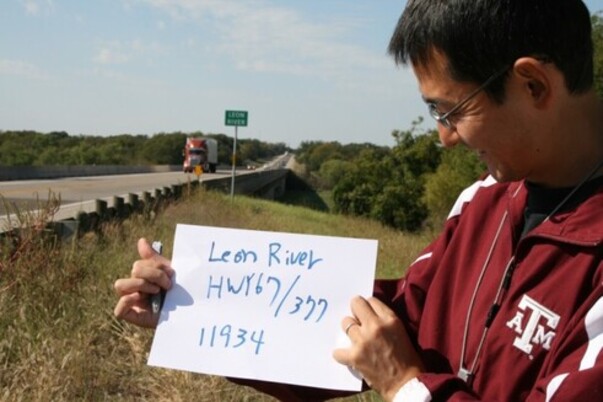Research / Water Science Laboratory / International Collaboration: Japan
An important component of WSL’s research activity is international collaboration. We have been very fortunate to have met and worked closely with scientists from Shimane University, in Matsue, Japan, since 2005.
Research efforts have focused on several soil and water related areas including: heavy metal distribution in fluvial sediments (Matsumoto et al., 2010), bio-mediated sorption processes and materials to mitigate phosphorus eutrophication (Wolfe, 2009), development of watershed-scale hydrologic models (Somura et al. 2009), watershed-level environmental resource recycling (Mori et al, 2015), and secondary / college level science education (Wolfe 2015). Several AgriLife scientists have participated in symposiums at Shimane University (Dugas, 2005; Narasimhan et al., 2005; Hoffman, 2005 & 2008, Wolfe, 2008) and numerous Japanese scientists have visited the Blackland Research and Extension Center (BREC) where they have taken part in both field and laboratory investigations in such areas as: soil erosion (Mori et al. 2015), water quality (Somura, fluvial sediment contamination, and hydrologic modeling in both Texas and Japan. Two Shimane University scientists, Dr Ichiro MATSUMOTO and Dr. Hiroaki SOMURA have been particularly active with the WSL. Dr. MATSUMOTO has made more than 10 visits to Temple in the past 9 years to examine river sediments and Dr. SOMURA has made more than a dozen visits. Dr. SOMURA was able to spend one entire year at BREC (2010-2011) investigating water quality in the Leon River Watershed upon receiving a Japan Society for the Promotion of Science (JSPS) Fellowship.

View of Mt. Fiji from Haneda Airport in Tokyo Japan

Ichiro MATSUMOTO and Jason McAlister collecting Texas river sediment samples
Another important component of WSL’s research philosophy is personal connections. Conducting research is not just doing the field and lab work; to be successful, an investigator relies on a good bit of social interaction and cultural exchange. As an example, personal connections with the above mentioned Japanese scientists helped Dr. Wolfe obtain a JSPS/National Science Foundation Fellowship. Because of his strong inter-personal connection and their letters of support, he was able to spend ten weeks in Japan during the summer of 2009 investigating the effect of periphyton on phosphorus sorption by recycled concrete materials (Wolfe, 2009).
After participating in the JSPS Summer Program, Dr. Wolfe joined the US-JSPS Alumni Association (http://www.jspsusa-alumni.org/). This organization fosters collaboration among its members and their Japanese colleagues through a website, newsletters, and annual meetings. The “Member Publications” listed under the “Member Activity” page on the web site give interesting descriptions of US-JSPS Alumni experiences. Information and links regarding JSPS supported programs are also provided for persons interested in conducting new or continued research in Japan.

Dr. Hiroaki SOMURA scouting Leon River monitoring locations

Dr. Yasushi MORI making soil moisture measurements in Texas

Dr. Wolfe harvesting periphyton samples from Lake Shinji in Shimane, Japan
Presentations and publications resulting from BREC/SHIMANE UNIVERSITY collaboration
Dugas, WA (2005) An overview of biophysical simulation modeling at Blackland Research and Extension Center. International Seminar Sustainability of the precious water environment – Partnership between Texas and Shimane. January 29-30. Matsue, Japan.
Hoffman DW, and JE Wolfe (2008) Using an APEX model “no-practice scenario” to evaluate Fort Hood environmental field programs. International Symposium Restoration and Management of Wetlands: Case studies and significant knowledge. March 1 – 2. Matsue, Japan.
Hoffman, DW (2005) Evaluating erosion-reducing best management practices with water quality data on the Fort Hood Military Base. International Seminar Sustainability of the precious water environment – Partnership between Texas and Shimane. January 29-30. Matsue, Japan.
Matsumoto I, Wolfe JE, III, Hoffman DW, and Ishiga H (2010) Longitudinal distribution of heavy metals in fluvial sediments of the Trinity River, Texas. Texas Journal of Science 62:223-236.
Matsumoto I, Hoffman D, Wolfe J, McAlister J, and Ishiga H (2009) Comparative study of heavy metal concentration of stream sediments on major rivers of Texas, USA and several rivers of Japan. Goldschmidt™2009 – “Challenges to Our Volatile Planet”. June 21-26. Davos, Switzerland.
Matsumoto, I (2007) Heavy metal concentrations of Hii River Basis system, Shimane Prefecture, Japan. International symposium – Restoration and sustainability of estuaries and coastal lagoons – Toward the wise use of Lakes Shinji and Nakaumi. 26-28 January. Matsue, Japan.
Mori, Y, H Somura, J Wolfe, and T Nonaka (2015), Challenges to establishing environmental resource recycling society after Texas water environment project, Water, Land and Environmental Engineering, 38(1), 7-10 (in Japanese).
Narasimhan, B, R Srinivasan, and S Bednardz (2005) Non-point source pollution assessment using the Soil and Water Analysis Tool (SWAT). International Seminar Sustainability of the precious water environment – Partnership between Texas and Shimane. January 29-30. Matsue, Japan.
Somura, H, I Takeda, J Arnold, Y Mori, J Jeong, N Kannan, D Hoffman (2012):Impact of suspended sediment and nutrient loading from land uses against water quality in the Hii River basin, Japan, Journal of Hydrology, 450:25-35.
Somura, HWolfe JE, III (2015) Drought and Water Supplies in Texas: Research directions. Shimane University Senior Graduation Session KANKYO-TERAKOYA for Science and Environment, January 31, Matsue, Japan.
Wolfe J E, III and Lind OT (2010) Phosphorus uptake and turnover by periphyton in the presence of suspended clays. Limnology 11:31-37 (with Japanese abstract).
Wolfe JE, III (2009) Characterizing bio-mediated sorption processes to improve functionality of recycled concrete materials used for remediation of phosphorus eutrophication in aquatic ecosystems. Japan Society for the Promotion of Science Summer, Research Fellows Symposium – June 16-17. Sokendai University, Hayama, Kanagawa, Japan.
Wolfe JE, III and Lind OT (2008) Suspended clay effect upon phosphorus uptake and release by stream periphyton. International Symposium Restoration and Management of Wetlands: Case studies and significant knowledge. March 1 – 2. Matsue, Japan.
